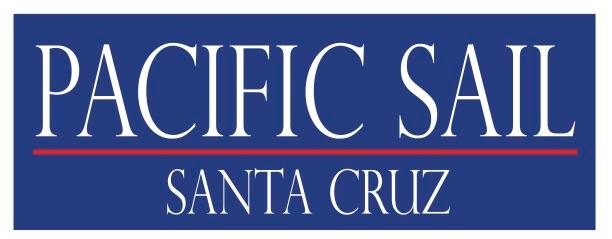What’s it like on the Monterey Bay from November through March?
Typically, the winds settle down between storms and we can get the most amazing, sparkling clear days with tranquil sea conditions. It’s actually quite enjoyable, sailing along in light winds, checking out the fall and winter sea life, especially when the California Grey Whales start migrating to Mexico in December. Our first pre-winter storm system…
Sailing Quotes
“Twenty years from now you will be more disappointed by the things you didn’t do than by the ones you did do. So throw off the bowlines. Sail away from the safe harbor. Catch the trade winds in your sails. Explore. Dream. Discover.” —Mark Twain Dreams come true; without that possibility, nature would not incite us to have them. —John Updike (b. 1932), U.S. author, critic. Self-Consciousness “What is liberty? We say of a boat skimming the water with light foot, ‘How free she runs,’ when we mean, how perfectly she is adjusted to the force of the wind, how perfectly she obeys the great breath out of the heavens that fills her sails. Throw her head into the wind and see how she will halt and stagger, how every sheet will shiver and her whole frame be shaken, how…
Moorings Charters
Pacific Yachting is a charter broker with the Moorings Charter Company. They charter yachts around the world in some of the most ideal sailing locations. We use the Moorings because they have an excellent reputation. Their prices may be a slightly higher than some of the other foreign charter companies but we figure that if you are going that far you don’t want to deal with any major problems. If you want Pacific Yachting to book your next sailing vacation, we can save you money. Just go to the Moorings web site at http://www.moorings.com, pick a location and give us a call or e-mail.
Docking News
Pacific Yachting & Sailing graduates continue to prove that they are quite proficient at docking in our berthing area. We’ve observed our graduates are really skillful at resolving those conflict- resolution, docking issues. Thank-you for actually following all of those Pacific Yachting & Sailing Instructors, philosophies. “Slow is good, slower is better.” If there’s an uncomfortably tight docking situation that you find yourself involved in, relax, – put the boat in neutral, take a deep breath, ask your crew to stand by with a fender or boat hook to gently fend off; at this point you should only be drifting so no damage could possibly happen. Access the situation. Ideally, if you’re backing up, going stern to the eye of the wind is ideal. If the wind continues to push you beam to other boats, just leave the helm and…
Winter Ocean Swell
There are times when the harbor entrance can have plenty of depth from the continual winter dredging, though we still can get fairly large swells at the harbor entrance. First, there’s a live web cam showing the harbor entrance, 3 weather prediction sites, tides, and swell height prediction. Please do your homework before coming over to…
Spring Lines
Just a reminder-when you secure the boat to the dock, please tie the spring lines around the base of the chain plates, not the stanchions. The stanchions are not meant to sustain the type of lateral loads imposed by the fore and aft movement of the boat. Typing spring lines to the stanchions will cause the base to work loose and water to seep into the deck core (that’s a bad thing). Oh, anybody know the proper knot to tie around the chain plate? (Answer: round turn and two half hitches). Here’s a great resource for all knots…in animation! http://www.animatedknots.com/roundturn/index.php
ASA Certification – Why Take the Exams?
ASA is a nationally recognized sailing certification and accreditation program. These organizations, which include sailing schools, charter companies, sailing instructors and sailors, set competency standards for both sailing knowledge and on-the-water skills for sailors and instructors from basic to offshore sailing levels. Certification simply means a person has demonstrated a standard of proficiency by passing both…
What is Marine Debris?
Marine debris has been defined by NOAA as any persistent solid material that is manufactured or processed and directly or indirectly, intentionally or unintentionally, disposed of or abandoned into the marine environment or the Great Lakes. In layman’s term marine debris is trash or litter that ends up in our rivers or oceans. It is found throughout…
Marine Debris: Oceans or Landfills?
There is an area in the North Pacific Ocean between California, Hawaii and Japan that is accumulating garbage at an alarming rate. This area, commonly known as the North Pacific Gyre, has been transformed into something that resembles a plastic soup. It is the result of our “disposable lifestyle” and it’s only getting worse. It is becoming clear…
Netting Plastic and Marine Debris
Remember the classic scene in the movie, “The Graduate” at Benjamin Braddock’s (Dustin Hoffman) college graduation party? One of his father’s friends came up to him and said: “One word son- PLASTICS!” I have occasionally thought to myself, yes, I should have listened to that line and pursued a career manufacturing anything plastic, becoming a multi-billionaire, until now. I’m quite content running a sailing school, working on ways to clean up all of that plastic I could have become rich off of. All Pacific Yachting boats will have fishing net on all of our boats located in the outside lazarette for netting trash and plastic on our marine sanctuary. Please do your part in helping the marine environment.
